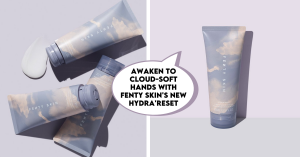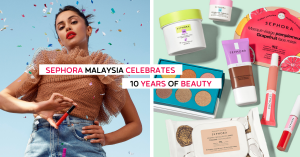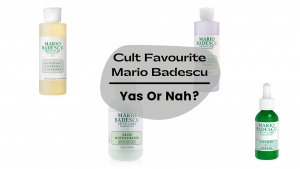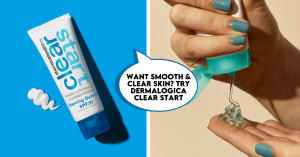Skin
What Is The Difference Between Skin Purging Vs Breakouts And What You Can Do To Treat Them
We’ve all been there; your skin has been feeling and looking great, you’re doing your skincare religiously. However, a red...
By: Beauty Insider Journalist / October 10, 2021
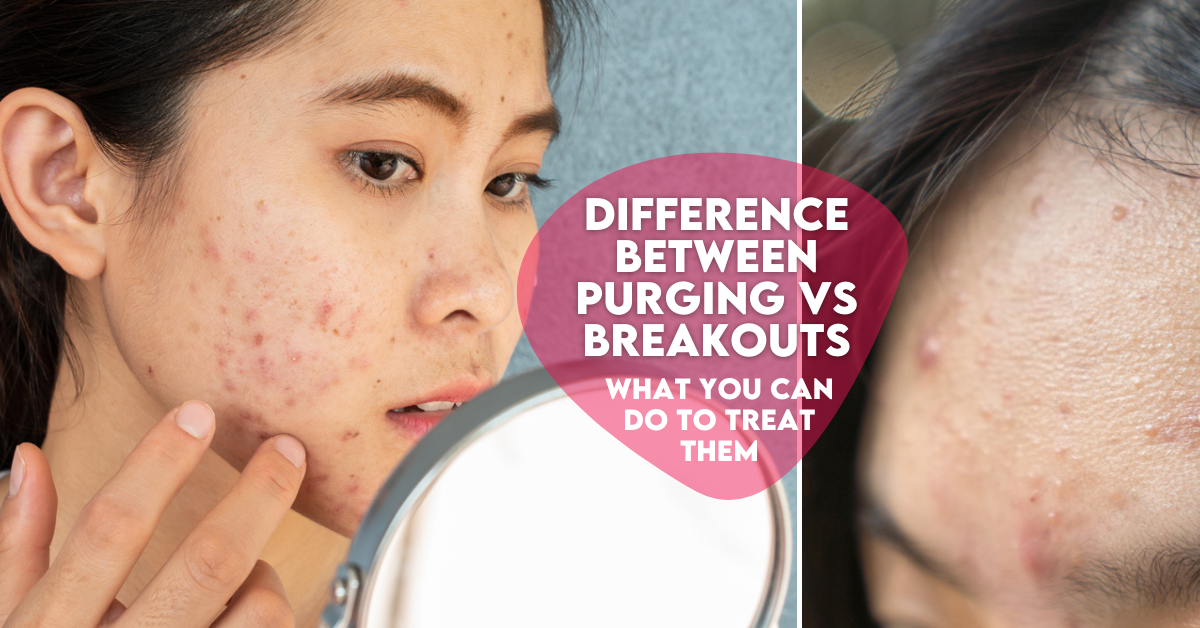
We’ve all been there; your skin has been feeling and looking great, you’re doing your skincare religiously. However, a red sucker appears and then another, and then another. We’re thinking the same thing and scratching our heads, why are spots appearing all of a sudden? Well, the answer to that is you’re not having breakouts but your skin is purging and Beauty Insider is going to tell you all about it.
Breakouts, also known as acne, have a bad rep and nobody likes them. They are small pockets of oil, dead skin cells and bacteria. Additionally, being irritating, annoying, discouraging and even painful are what acne brings which is why no one is a fan of them. However, what would you say if we told you that there is “good acne” too?
Contents
What Is Skin Purging?

When you apply a fresh product, it pulls all of the dead skin cells, germs, oil, and debris from beneath your skin to the surface, where they can be removed. Simply defined, “skin purging” refers to the removal of dead cells, oil, germs, and debris from under the skin’s surface. This causes purging, which is characterised by breakouts.
When you use retinol creams or chemical-based exfoliators for acne or anti-ageing, you may experience purging. They expel all of the debris, dead cells, and substances that your skin has absorbed and retained. It appears as clusters of tiny, red bumps and small pimples or pustules, which might easily be confused for any other outbreak.
What Causes Skin Purging?
When you start using a new product that involves chemical exfoliants, your skin purges. This might include alpha-hydroxy acids, beta-hydroxy acids, and retinoids, which all speed up skin cell turnover. Additionally, it can also happen following in-office procedures that use the same sorts of chemicals, such as chemical peels.
Purging is the process of bringing all of the junk from the deeper layers of the skin to the surface in order to get rid of it. When your skin pulls oil, debris, and germs up and out of your pores, acne or a breakout is likely to appear. As aggravating as this fresh crop of blemishes may be, keep in mind that it isn’t always the product’s fault.
Pimples generated by a skin purge aren’t new; they’ve always been simmering under the skin’s surface. The new product just accelerated the process.
What About Breakouts? Aren’t They The Same?
Breakouts are more common in the areas of our skin with the most oil glands. This includes the face, shoulders, chest, and upper back. The hair follicle fills with dead skin cells, sebum, and germs during a breakout or an acne flare-up. Swelling, redness, and inflammation result as a result of this.
Pores get blocked over time and push their contents to the skin’s surface. Whiteheads and blackheads are not the same as pimples. When bacteria become trapped in a blocked hair follicle, it causes irritation and red pimples. Finally, when skin cells, oil, and bacteria become trapped deep within the pore, severe cystic acne can develop under the skin’s surface.
Let’s Understand The Differences

Irritation caused by a new product that isn’t caused by retinoids, acids, or peels is most likely an allergic response or sensitivity. It’s most likely a reaction to a new product you’re using it you’re experiencing breakouts or dryness in a region of your face where you don’t typically break out. Purging will take place in a more specific region where you break out often.
Moreover, if you’re prone to cysts around your jawline or flaking beneath your nostrils, purging will help you get rid of them completely. Purge pimples will form and vanish more quickly than a regular pimple.
Can You Prevent Skin Purging?
To begin, make sure you’re just experimenting with one new product at a time. By gradually introducing a new product containing the aforementioned active components, you can help reduce the probability of a purge. When you’re ready to try it on your face, use a fraction of the suggested quantity.
Also, utilise products that are meant for everyday usage every second or third day to extend the duration between applications. The rate at which you can increase the amount of product you use and how often you use it will be determined by your skin type and the product you’re using.
Keep in mind that even if you’re starting off slowly, you may still suffer some skin purging. However, in general, after you see some benefits and less purging, you can increase the quantity and frequency of application.
How To Treat Skin Purging?
There’s not much you can do after a purge has begun but wait. Once the purging process has begun, it is impossible to halt it. Because the skin is fragile and sensitive at this time, avoid touching your face until the pimples have healed.
You can continue to use the active component that’s causing the purging, but you shouldn’t use anything else with active chemicals. Keep the remainder of your skin-care routine straightforward: a mild cleanser, moisturiser, and, most importantly, sunscreen.
However, redness, irritation, stinging, especially if they’re widespread, are not symptoms of purging, but rather of an allergic response. If you’re still getting pimples and bumps after two weeks, or if they go away and then reappear, you should probably cease taking the product. It might just be that the product isn’t responding well with your skin, or that it’s blocking pores and creating persistent breakouts rather than a temporary skin purging.


